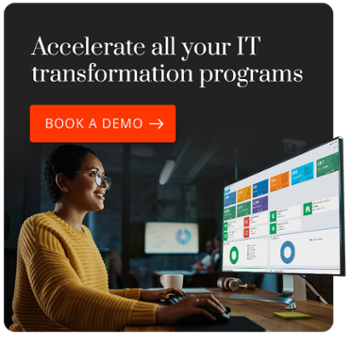As businesses adopt new ways of interacting with customers and employees, partly as a result of the pandemic, anywhere operations is on the rise. It’s a term that Gartner uses to describe a model that assumes enterprise end users could be working or interacting with the company anywhere. IT teams will be charged with delivering the capabilities that enable this model and to do so they are going to become more agile to adapt to rapidly changing needs.
Gartner suggests IT teams do this by focusing on five key areas:
- Automating endpoint operations
- Adapting infrastructure to new ways of working
- Enhancing end user collaboration and productivity
- Optimizing cloud and edge infrastructure
- Improving the digital experience
Here we discuss the challenges and opportunities of enhancing end user productivity and collaboration.
In 2020 we found new ways to work together but apart to maintain productivity. If you work in IT, you perhaps demonstrated the greatest resilience. As you too were isolated from colleagues you had one of the hardest tasks, rapidly rolling out services to support new ways of working.
Enterprise adoption of collaborative tools using applications such as Microsoft Teams and Zoom grew dramatically and soon became the norm. Now as companies see benefits from leveraging a global talent base and cutting down on real estate expense, anywhere operations is becoming the new norm.
While some employees are moving toward a hybrid working model – where they take advantage of workspace hoteling in the office only part of the time, others have fully embraced the concept of remote working.
That’s why, to deliver fully on the promise of anywhere operations, IT teams will need to focus on enhancing user collaboration and productivity.
Deliver the tools that allow seamless collaboration:
The 2021 Adobe State of Work report found that employees have even less time for technology that gets in the way of their productivity. 49% of survey respondents said that they would quit a job if technology was hard to use or outdated. That puts even more pressure on you if you work in IT to understand what tools and technologies teams need.
So, what will the new remote, collaborative office look like? It could be that your company chooses to implement augmented or virtual reality capabilities, so teams feel like they are working together or to help them more easily connect with colleagues. Business training will need to be delivered in a more intuitive way – including training on new tech – to smooth the integration process and ensure it allows employees to be productive, rather than frustrates them.
Digitally enhance physical spaces:
While default should be the digital experience for anywhere operations, IT teams will need to cater to the needs of end users collaborating within a physical space and that means enhancing those spaces digitally too. You could be thinking of:
- Designating areas of the office to meet the needs of the teams that will work there, so end users can book spaces where they will be close to the people they work with.
- Triggering more interactivity between employee devices and the building, for example allowing end users to use their devices to navigate an unfamiliar building to find a colleague or work area.
- Allowing end users to scan QR codes on a workstation, to understand if it’s available to use and equipped to meet their needs.
- Leveraging capabilities such as AR and VR to allow teams in offices around the globe to feel like they are physically working together for tasks such as product development or testing.
Becoming more agile to enable anywhere operations
We talked a lot about the barriers to anywhere operations and the need to adapt legacy infrastructure to new ways of working to better manage their hybrid environments. To deliver anywhere operations it will be vital to have a dynamic view of the changing environment, to understand where end users are physically, and what technologies, equipment, and applications they need to effectively perform their roles.
That means finding better ways to collaborate with end users and streamline the delivery of new capabilities. One way of doing this is to implement a digital platform conductor (DPC). A DPC connects to and orchestrates your disparate IT systems to collect and aggregate information about users, systems, applications, and dependencies. It then uses this data to automate workflows such as:
- Communicating details about program rollouts and status to stakeholders, thereby improving program transparency.
- Data attestation and scheduling via a self-service portal. This greatly improves productivity for both IT and end-users by eliminating the exchange of countless emails.
Task execution for both people and systems. Using a DPC you’ll not only simplify the process of enhancing collaboration and productivity, but you can also augment the IT experience for your end users.
Book a demo to understand how ReadyWorks, a digital platform conductor, enables seamless implementation of anywhere operations to enhance end user collaboration and productivity.

